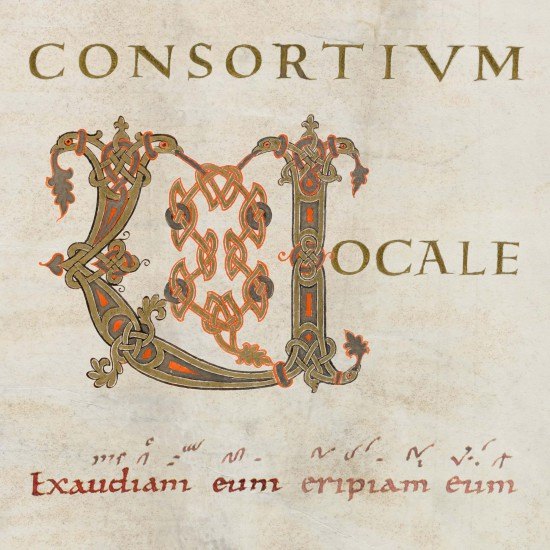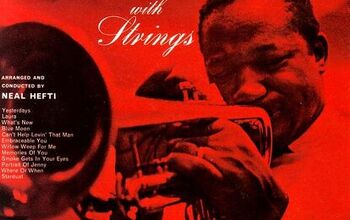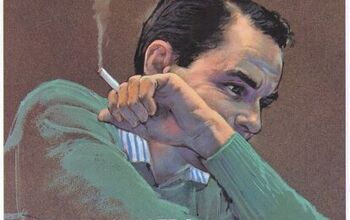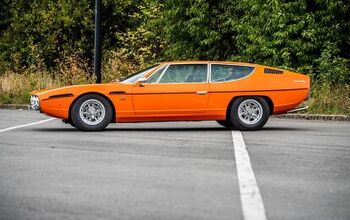Grand Touring Music, Part 3
Our imaginary road trip with great music (see Part 1 here and Part 2 here) continues with music usually thought of as “classical.”
Chant. Ya gotta luvvit. Western music started there.
The composers of the early Classical style (Haydn, Mozart, and others) wrote “symphonies” as a set of separate but (usually) thematically related pieces of music called “movements.” In doing so, they were only following the pattern that had been set centuries before, when composers would write vocal-only or accompanied settings for the Catholic Mass as a series of pieces connected by their being based on the same musical theme.
While the Renaissance use of multiple vocal or instrumental parts for sacred music was a revolutionary development (compared to the all-voices-on-the-same-note model of chant), the result was often evolutionary, in that the thematic material often was a borrowed chant melody. During the 19th century—and even today—certain ancient chant fragments (such as the Dies Irae—Day of Wrath—motif) were quoted in newly composed music.
The otherworldly, organic simplicity of chant provides a much-needed respite from the hurry, noise, and chaos of modern life. The 10th century is not a bad place to visit—as long as you can get back. The recommended recording is so realistic that you can almost smell the incense.
Sound samples and downloads here.
Buy the physical disc here.
7. Glenn Gould: J.S. Bach: The Goldberg Variations
J.S. Bach wrote music to glorify God by illuminating the workings of the cosmos. Bach’s greatest works encompass the entire universe (or at least, the entire human experience) in music for one violinist, one cellist, or one keyboard player.
Even more so than Beethoven’s (to my mind, somewhat over-rated) Fifth Symphony, I think that one indispensible (and perhaps the indispensible) work of Western music a person must be aware of in order not to lack “cultural literacy in music” is J.S. Bach’s “Aria with Diverse Variations,” popularly known as the Goldberg Variations. Johann Gottlieb Goldberg may have been the first performer, but that is the subject of dispute. Neither Goldberg’s name nor that of his supposed patron Count Kaiserling appears on the title page of the sheet music published during Bach’s lifetime, in 1741.
Pianist Glenn Gould commercially recorded the Variations twice. His 1955 version fell like a thunderclap upon the musical world because of the precision and freshness of his articulation. In 1981, the mature Gould recorded his reconsideration, which is slower and is less concerned with vertical structure than with horizontal flow. Either or both are essential to any serious record collection. Note: Gould could not stop humming along with the music, even in a recording session. Just get used to it.
Listen to the complete 1981 version here.
Buy a set of both versions here.
8: David Oistrakh: Mozart Sinfonia Concertante
It’s rather hard to fathom that only 25 years separate the death of J.S. Bach (1750) from the time Mozart hit his stride as a composer (1775). Mozart wanted to move people directly and immediately. To do so, he had to invent a new way of writing music. Once that new way had taken the field, there was no turning back.
Dismissing a friend’s compliment, Mozart once said, “Oh, I write music the way cows piss.” Mozart’s music is “natural,” but only in the most sophisticated way imaginable. His double concerto for viola and violin is one of his most luminous works.
Listen to the slow movement here.
Buy it here.
9. The Cypress String Quartet: Beethoven Late Quartets
Beethoven’s symphonies and piano sonatas are among the best known of all classical compositions. However, not only are they painfully over-exposed; many hard-core classical listeners end up concluding that they are ultimately less rewarding than Beethoven’s more intimate chamber works, especially his late string quartets.
One could easily while away an 898-mile road trip by listening to all of Beethoven’s quartets (he wrote more than a dozen), but here I recommend that you dive into the deep end of the pool by obtaining CDs (or hi-res downloads) of his late quartets as played by San Francisco’s Cypress String Quartet. (I recommend Volume 3; if you like that, you can get the earlier two CDs in the series.)
Listen to Op. 127’s first movement on YouTube here.
Sound samples, downloads, and physical-disc orders here.
10. Tracy Silverman: John Adams The Dharma at Big Sur
Not all the great music was written 200 years ago. A very unlikely piece that has totally knocked me out is John Adams’ recent concerto for six-string electric violin and orchestra, The Dharma at Big Sur.
Blending elements of Indian music, trance music, and electric-guitar-style virtuosity, The Dharma at Big Sur defies description. Silverman plays the pants off the solo part. So just click below for an audio-only YouTube.
Listen to The Dharma at Big Sur Part 1 here.
Buy it here.
Record producer John Marks is a columnist for Stereophile magazine.
More by John Marks
Latest Car Reviews
Read moreLatest Product Reviews
Read moreRecent Comments
- 2manyvettes Since all of my cars have V8 gas engines (with one exception, a V6) guess what my opinion is about a cheap EV. And there is even a Tesla supercharger all of a mile from my house.
- Cla65691460 April 24 (Reuters) - A made-in-China electric vehicle will hit U.S. dealers this summer offering power and efficiency similar to the Tesla Model Y, the world's best-selling EV, but for about $8,000 less.
- FreedMike It certainly wouldn't hurt. But let's think about the demographic here. We're talking people with less money to spend, so it follows that many of them won't have a dedicated place to charge up. Lots of them may be urban dwellers. That means they'll be depending on the current charging infrastructure, which is improving, but isn't "there" yet. So...what would help EV adoption for less-well-heeled buyers, in my opinion, is improved charging options. We also have to think about the 900-pound gorilla in the room, namely: how do automakers make this category more profitable? The answer is clear: you go after margin, which means more expensive vehicles. That goes a long way to explaining why no one's making cheap EVS for our market. So...maybe cheaper EVs aren't all that necessary in the short term.
- RHD The analyses above are on the nose.It's a hell of a good car, but the mileage is reaching the point where things that should have worn out a long time ago, and didn't, will, such as the alternator, starter, exhaust system, PS pump, and so on. The interiors tend to be the first thing to show wear, other than the tires, of course. The price is too high for a car that probably has less than a hundred thousand miles left in it without major repairs. A complete inspection is warranted, of course, and then a lower offer based on what it needs. Ten grand for any 18-year-old car is a pretty good chunk of change. It would be a very enjoyable, ride, though.
- Fred I would get the Acura RDX, to replace my Honda HR-V. Both it and the CRV seats are uncomfortable on longer trips.






































Comments
Join the conversation
Baroque string concerti are mighty fine driving music. I like Vivaldi and Locatelli best. Wish I could find MP3s of the old Vox Box of Susanne Lautenbacher playing L'Arte del Violino.
One last : to be filed under ; Is it is or is it aint [ classical music that is ] I've heard and read compelling arguments on both sides ... including from the composer/performer [ that it aint ... though I may of swayed him otherwise ] Gabriel Kahane "Gabriel Kahane " In my opinion this album is . Classical that is . An American song cycle in the tradition of German lieder . With an occasional node towards Herr Bach . Think the most accessible of Charles Ives vocal music with a touch of pop and you'd be right on the mark . The fact that this California Kid can portray the New England I grew up in and still love [ though not VT ] so well musically never ceases to amaze me . His " North Adams " being the perfect road song while driving on the "Blue Highways" of American . His " Underberg " being an accurate albeit sad commentary as one travels thru the many dying and dead towns on those "Blue Highways" through out the US . Mr Kahane ... though not yet receiving the attention he deserves [ despite his young years ] should be considered an American Treasure ... due in part to his appeal across a wide range of audience ... from Classical to Hipster .... along with his talents both musical and lyrical . The kid comes from a fine set of musical genes as well . The old man being a master/maestro .. with the son being a genius Check out his " CraigsList Lieder " on YouTube and on his site . Musically and lyrically it is a gem . Ecco . Va bene . Basta !